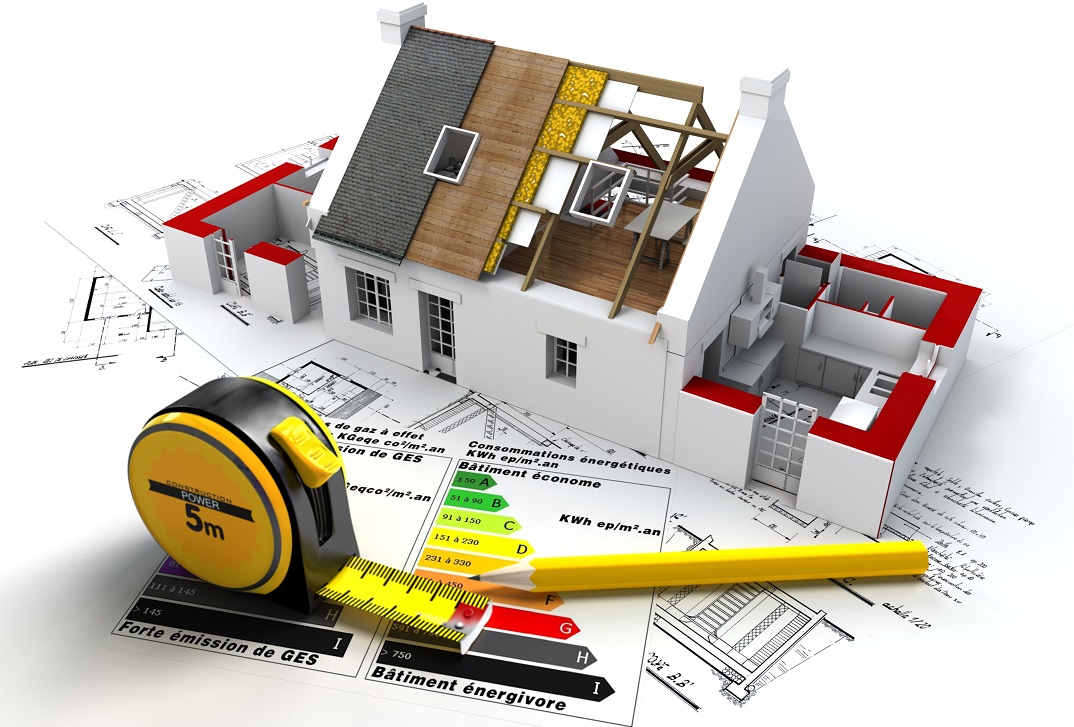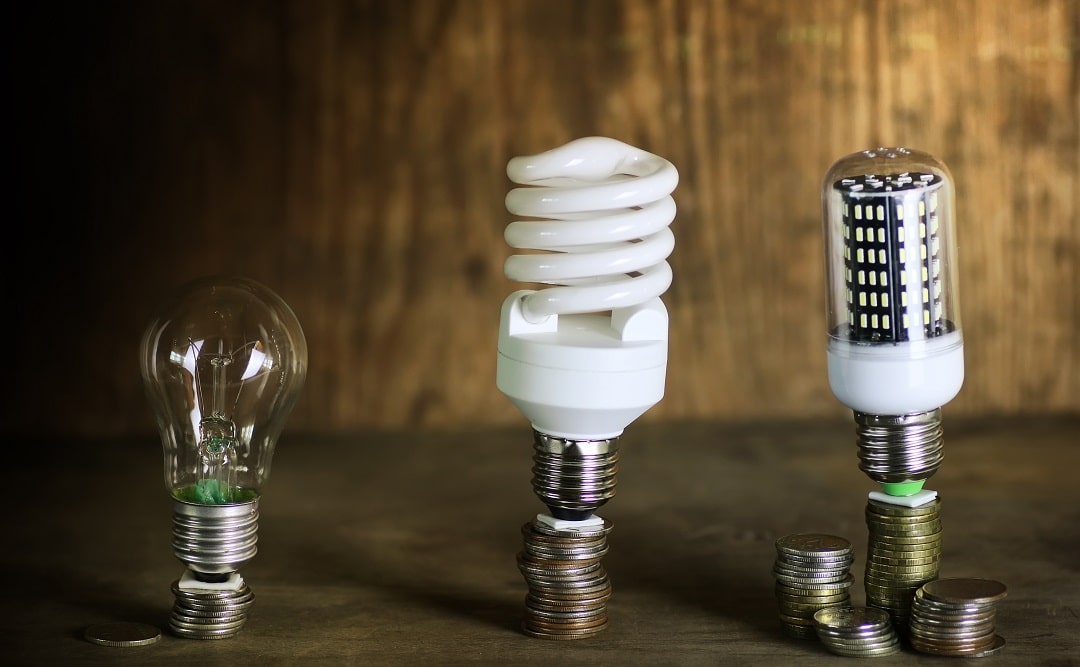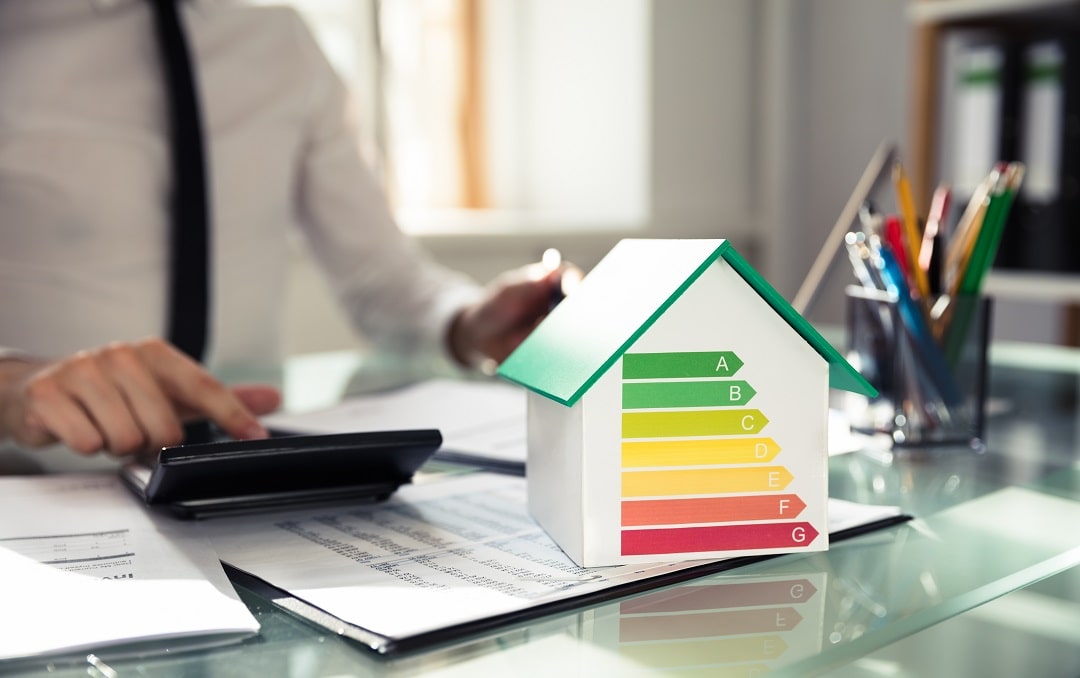Minimising Energy Consumption and the Future of Energy Efficient Buildings

As the world turns to the issue of global warming and the dwindling resources available to us, a global strategy to build more energy-efficient homes and start a sustainable approach to your personal life becomes more necessary. There are considerable benefits in becoming more energy-efficient across society. As more individuals, companies, and governments hone in on the energy rating standards by which efficiency savings should be judged, all the new energy-efficient, green buildings lead us to a bright future.
❂ The Futuristic "Smart" Energy Efficient Materials

As the cost of domestic utilities such as gas and electricity continues to rise, more needs to be done to ensure that buildings are less wasteful. Green, modern architecture lends itself to helping a building become more energy-efficient, with several intelligent designs "baked in".
One way in which a building loses efficiency is through the roof - as heat escapes through poorly insulated roofing systems. Still, several clever ideas are designed to minimise heat loss and maximise energy efficiency, which include:
- Traditional loft insulation
- Thermal membrane under tiles
- Roofs made of novel materials, such as grass roofs
Currently, architects and planners call alike to include methods to improve energy efficiency in homes. These technologies have the building materials themselves, such as smart plastics that can be 3D printed and self-healing materials that aim to end cracks and deterioration in roofing materials. These smart materials are already being used in many "smart homes" to test their efficacy and aid in energy-efficient homes and nationwide home energy rating schemes.
Check out this explainer video to know more about energy-efficient homes:
Thanks to the invention of microsensors, homes and buildings of the future will become fully testable and checkable for their energy fitness. They check a building's energy efficiency and find the best way to heat and cool a home will become as easy as using a telephone app.
Using sensors to control a heating plan that works around a family's schedule and finding the most efficient and cost-effective time to heat a home can be programmed based on the information obtained by a home's sensors.
❂ Ways to Reduce Energy Consumption in Residential Buildings
In residential terms, energy efficiency is a huge area in which the homeowners can save a lot on running costs and help the environment at the same time. Many new residential buildings are taking advantage of many government schemes to move towards more energy-efficient options. Different countries have different rating scales introduced by the governments.
However, since 2011, a 6-star equivalent home has been the current minimum requirement across most of Australia. Here are some ways residential property owners can minimise their building units' overall energy consumption and achieve a 6-star home energy rating more efficiently.
① Start a Standard Energy Efficiency Plan at the Planning Stages

The rating systems offer a multitude of residential energy efficiency ratings and assessments that provide homeowners, buyers, property developers and building services access to the actual costs of running a property. When incorporated into the planning stage of a building, the consultants can offer insights into lowering operational costs and improving ratings across the board.
It gives any seller, buyer or tenant a good idea and a 'measuring tape' of the property's running costs and can significantly improve your home's selling price.
② Consider Heat Recovery

For any equipment that generates heat, you should consider using a heat exchanger to help offset the heating need from HVAC equipment. For instance, 80–90% of the electrical energy used by an air compressor is converted to heat. This is why heat recovery system facilitation is essential for minimising any building's energy consumption and helping buildings achieve the standard house energy rating.
Nowadays, waste-heat recovery systems are used in laboratories or industrial buildings and residential buildings to provide beneficial heating in different building areas. It refers to a heat extraction process from the air, both inside and outside of a building and later reused to provide heat internally by reducing energy consumption. Any piece of equipment or heat-producing building appliance can use the heat exchanger and recovery unit to help offset the heating needs from HVAC equipment.
Primarily, there are two ways of ensuring proper ventilation and efficient heat recovery in buildings- either through a water-based, hydronic system or air-based system, recovering 50-90% of the total energy.
Air-based heat recovery systems are mainly used to reduce heat loads in a building by cooling or preheating the building ventilation. On the other hand, the hydronic ones can recover heat from internal loads using a cooler that recovers heat and apply the recovered energy to the heating water system based on the building-specific requirement and heating loads.
③ Install LED Lighting Technology

LED lighting offers numerous benefits for residential properties planning to reduce their energy usage and overall utility costs. For example, switching to LED lighting from Incandescent bulbs has the potential to save an incredible 80% on electricity bills. And besides, traditional lighting sources, especially fluorescent lights, consume more energy during cold weather, requiring a higher voltage to turn on. On the other hand, LED lights perform even more efficiently in low temperatures, illuminating all the perimeters of buildings and outdoor spaces.
In addition, as LED lighting produces more useful lumens, less waste light and almost no heat compared to other lighting technologies, you can cut the cost short by diverting maintenance services as a smart investment and more improved environmental performance.
❂ Why Do Homeowners Need Energy Rating Assessment?
-1.jpg)
The rating systems consider several factors of a house's heating and cooling needs, based on information about the house's construction, design and the climate in the region. This thermal performance is calculated using purpose-built software from several licensed professionals throughout the country.
This move towards a 6-star energy rating as standard has come from concerned homeowners and buyers and states looking to innovate in the market. With more specialists coming into the industry to determine the future standards, more homeowners and prospective property buyers are taking advantage of the value for money an energy rating report can achieve.
A report that is generated by one of the professional consultants working in the industry will give you a baseline rating based on the property's current star rating, as well as help a property buyer or owner in determining how to convert or upgrade their existing home to achieve a better score.

A residential rating shows how energy efficient a house is, with more stars meaning more efficient. Each property is tested using an assessment that gives the property the final number of stars out of ten. For example, a 1-star rating is abysmal, and a 10-star rating is excellent. This Energy Assessment and Rating Report can cut red tape and boost the chances of gaining planning permits and licensing. Based on these standard occupancy assumption tests, the home energy rating service assesses and calculates the annual energy load for heating and cooling the property.
❂ Final Words

A residential energy assessment is a must for any new and existing residential buildings looking to make savings on utilities, with several specialists ready to help consult on upgrades from top to bottom. Depending on the type of the building, an energy rating report can make a huge difference when it comes to running costs while opening up new doors to future towns and cities, which will lead to the citizens being less energy wasteful.
Professional consultants, certified by NatHERS, can guide a homeowner to get the most from a property by installing solar panel water heaters, upgrading showers and water points, and installing rainwater tanks to bring a home up to standard. In addition, Superior Energy Rating will guide you through the report and provide you with the necessary compliance documentation fast and efficiently with a home energy audit and Thermal Performance Certificate.


